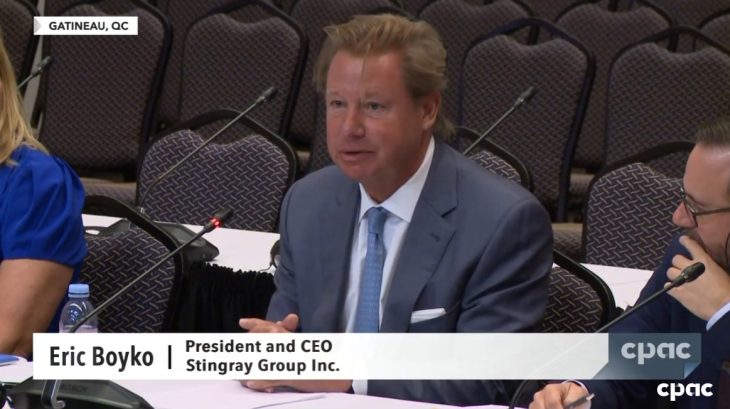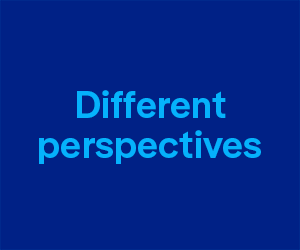
By Ahmad Hathout
Stingray’s announced acquisition of audio streaming and ad monetization platform TuneIn Wednesday is, in part, a play to get ahead of a trend that will see car manufacturers monetize their own proprietary audio systems, the media company’s president and CEO said Wednesday.
“The car is for sure what’s most exciting,” Eric Boyko said on the company’s fiscal second-quarter 2026 earnings conference call Wednesday about the deal worth up-to USD $175-million announced the day before.
“We are talking to 20 car manufacturers. TuneIn is talking also to 20 car manufacturers. The home run or the Holy Grail is, I would say, every car manufacturer wants to monetize their audio system. For years, they were not making money with radio. For years, they never got a penny from SiriusXM. You saw the move about GM taking away Apple CarPlay [and Android Auto]. You saw the move of Tesla taking away FM.
“The cars want to monetize that segment,” he added. “So, we believe that we are well positioned to own what we call OEM radio. So, I believe that every car manufacturer in the world from GM, BYD, Ford, Toyota, our friends in Germany will have their own OEM radio. They’ll call it Ford Radio. They’ll call it Toyota Radio. And in there, you’re going to have the Stingray music channels, just like SiriusXM. You’re going to have the TuneIn player and you’re going to have access to the beautiful Stingray Karaoke. I think both of us coming together we’re really, really positioning ourselves to be a global dominant player and I wouldn’t be surprised that in the next five, 10 years, that Stingray and TuneIn will be embedded in every car manufacturer in the world.”
TuneIn currently boasts over 75 million monthly active listeners worldwide, providing access to more than 100,000 radio stations, podcasts, music channels, news, sports, and audiobooks. Its content is distributed across more than 200 platforms and connected devices, including over 50 in-car audio systems, in over 100 countries.
TuneIn’s forecasted sales are about $110 million, split between $80 million in advertising and $30 million in subscription – a base that Boyko said is deliberately being deprioritized. Stingray’s goal, according to the boss, is to lean heavily on advertising going forward.
“We expect right now, subscriptions are decreasing by about five per cent per year,” Boyko said. “Our focus is not on subscription. Our focus is on monetizing every hour of listenership. And that’s why we’re seeing very strong advertising growth of 40 per cent. And that will be for the future.”
And that strategy will involve increasing the rate per hour around the world in the hopes of bumping up the base of revenue in other countries. Because despite the fact that 95 per cent of TuneIn’s revenue originates in the United States, 80 per cent of the 600 million listenership is outside of it, Boyko said.
“An average hour in the US will generate eight to 10 cents an hour,” Boyko said. “If you look at Europe, TuneIn is not getting 0.3 cents because the programmatic advertising system is much more sophisticated in the US and Canada and not as strong in Europe yet. So one of the key strengths here for us is in the future, when we start monetizing that 80 per cent of listenership across the world, which we’ll be investing with both TuneIn and we’ll need that advertising for the car business.
“A lot of the cars are in Europe,” he continued. “We have a strong savings account for the next five years for us to increase that 0.3 cents in Europe and the rest of the world and to bring it to the 8-to-10 cents range of the US. So that also is a very exciting growth portfolio for us. And the market will get there. We see the same thing with fast channels.”
Boyko said the TuneIn deal, which was three years in the making, is expected to close by the end of the year.
“We have over $100 million of inventory right now that is unsold,” Boyko said. “So, for the first project, and we’ve already started this morning, TuneIn will help us sell this unsold inventory on our fast channels.”
The news comes as the company reports its latest quarterly earnings and follows its announced acquisition late last month of DMI, a U.S.-based branding and in-store audio advertising platform. That acquisition extends the company’s retail media network by roughly 8,500 locations in the United States for a total of 33,500 locations on the continent.
“The acquisition comprises DMI’s prestigious client portfolio, including a large national pharmacy chain,” Stingray said in a release. “It also makes Stingray the definitive leader in in-store audio advertising for the U.S. pharmacy sector with its network now covering the two largest pharmacy chains in the country, as well as other major pharmacy retailers.”
Stingray reported $113.3 million in revenue in its second quarter 2026, which ended September 30 – 21 per cent higher than in the comparable period last year. It also saw more than 100 per cent increase in its net income to about $12 million against the comparable period.
The bulk of the revenue – 71.5 per cent – came from the broadcasting and commercial music segment, which was $80.8 million. The rest was $32.4 million from radio.
Along geographic lines, revenue in Canada was approximately $51.5 million, up 5.2 per cent against the equivalent period thanks largely to an increase in equipment and installation sales related to digital signage, the company said.
In the United States, revenue was approximately $51.9 million, an increase of 58 per cent against the same period, thanks mainly to an increase in FAST channel revenues and to an increase in equipment sales related to the acquisition of The Singing Machine, it said.
For the rest of the world, the company reported revenue of $9.8 million, down 16.2 per cent against the same period primarily due to a decrease in subscription revenues.



